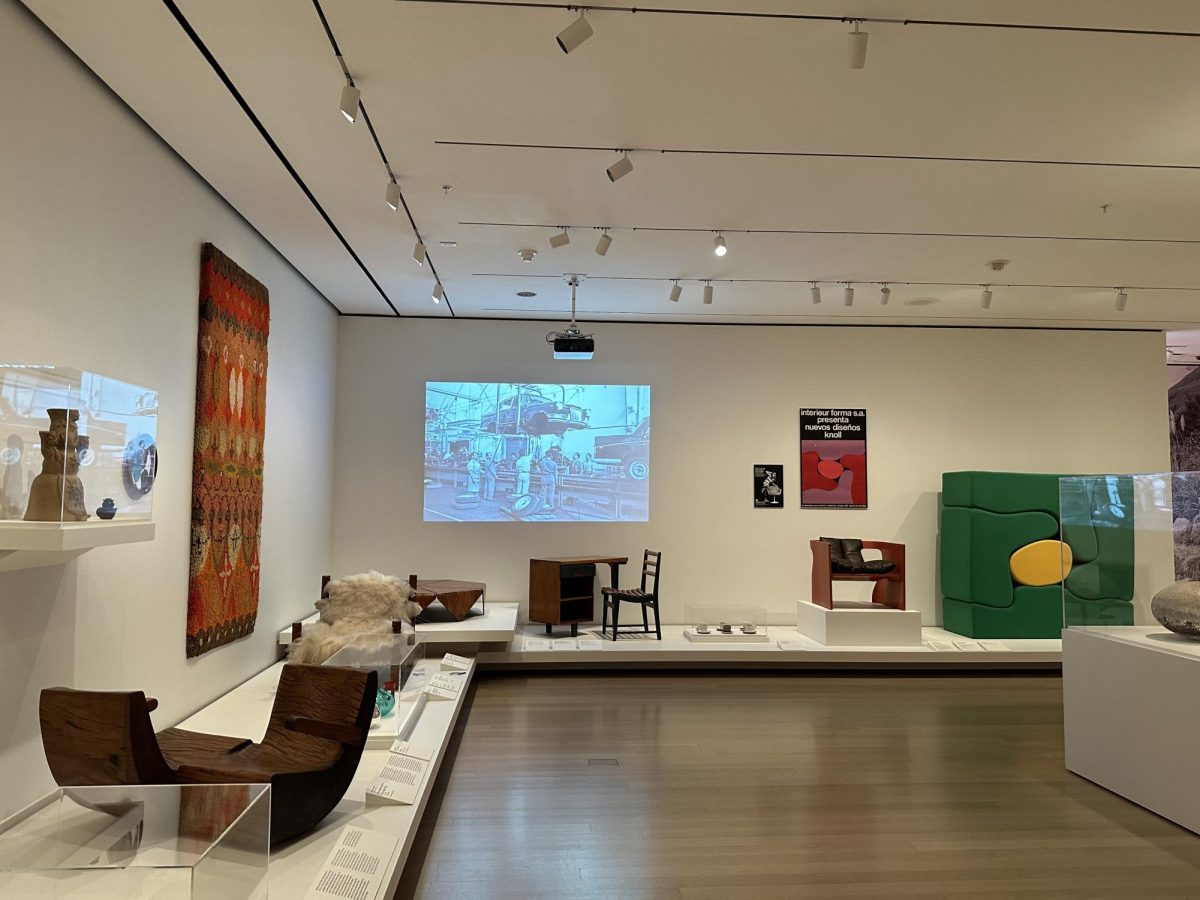Interior design can speak to a nation’s past and future. This is the central thesis of the Museum of Modern Art’s (MoMA) exhibition “Crafting Modernity: Design in Latin America, 1940-1980.”
Featuring the work of dozens of architects and interior designers in the late 20th century across Argentina, Brazil, Chile, Colombia, Mexico and Venezuela, the exhibition explores artistic development and change during a time period of large-scale industrialization across each of the six countries. Furniture, posters, textiles, ceramics and many home furnishings are among the over 150 featured objects.
What can the design of a home say about the political context and artistic history of the country that it was made in? According to MoMA’s guest curator Ana Elena Mallet and curatorial assistant Amanda Forment, the creatives behind this exhibition, visual design is highly intertwined with a nation’s identity. Their purposeful exploration of late 20th century Latin American homes, allows museum patrons to glance into the evolution of design in a region that blended indigenous artisanal techniques with modernist home design.
But among all the pieces, there was an ever present theme of conflict and balance. Conflict within political identity, balance within design, conflict between man and machine, past and future.
“The home became a site of experimentation for modern living during a period marked by dramatic political, economic, and social changes, which had broad repercussions for Latin American visual culture,” as is stated on MoMA’s description of the exhibition. “For nearly half a century, the design of the domestic environment embodied ideas of national identity, models of production, and modern ways of living.”
Stepping off the elevator, walking into the exhibition, one would be forgiven if they initially mistook the room for a mid-century furniture store; the gallery features classic home design elements like chairs and wall features. But closer looks reveal designs made from locally sourced materials, across the six Latin American countries. There was a featured poster of the Chilean communist party and there were woven-wicker chairs from Mexico — if nothing else, there was variety. And as a college student living with less-than-ideal furniture, I was filled with envy.
But among all the pieces, there was an ever present theme of conflict and balance. Conflict within political identity, balance within design, conflict between man and machine, past and future. Or as a New York Times review of the exhibition noted, the furniture represents a time period in Latin America where there was “a push for national identity, improved conditions for the working poor and enabled a marriage of native crafts and mass production.”
And the reflection of that reality within the visual design of the exhibition, is undeniable. Latin America experienced massive upheaval and sociopolitical unrest during this time period. But by trying to cover so much (the design legacy of basically an entire continent over 40 years), only within the walls of one gallery, it’s fair to say that MoMA was trying to say too much without reserving enough physical space in order for the curators to do so. Nevertheless, each piece intentionally represented impactful moments in Latin American Modernist design.
My favorite piece that highlighted the fusion between indigenous artisan techniques and modernist design was “Cuatro Paisajes,” by Colombian artist Olga de Amaral, a 1977 wall display made entirely of pieces of woven cotton, wool, goldleaf and horsehair — a pre-Columbian fiber art technique. The piece, from afar, blends out from a dusty beige color into a shocking red, designed to represent the Colombian landscape. Through this hybrid artistic effort, de Amaral blends modernism with indigenous Colombian art techniques.
Another standout was a printed quote by Cuban-Mexican designer Clara Porset in 1952, featured on the right side wall of the exhibition: “A machine-made shape is no less beautiful than a handmade one.” This relatively simple feature entranced a crowd of passersby, who paused to snap photographs. The artists’ statement is a testament to the belief that many of the featured artists in the exhibition held, that mass-production and increased machine capability, would not diminish the beauty of the art that they would go on to create.
To Porset, and many of the artists featured, there was a sense of optimism and vitality within their style fusion: a desire for a future that blended the pre-colonial artistic techniques that inspired them and the increasingly modern, globalized future that Latin America was heading toward.
“Crafting Modernity: Design in Latin America, 1940-1980,” is on display at The Philip Johnson Galleries of MoMA and will be featured until Nov. 10.


